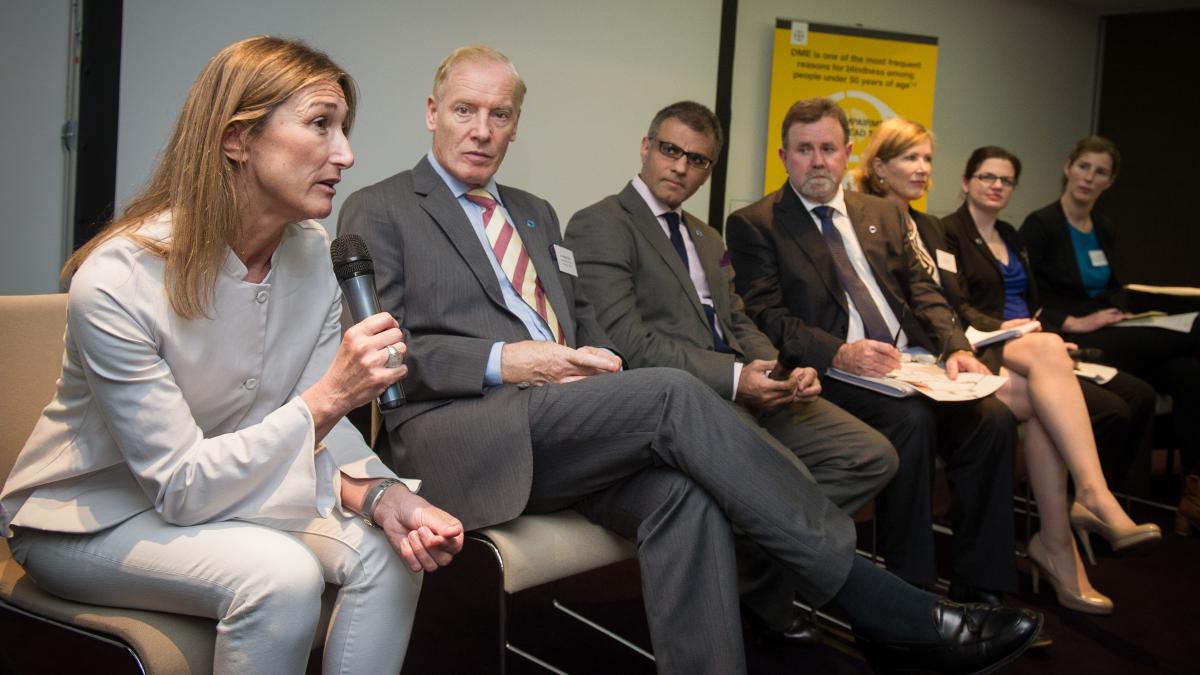Join a powerful, unprecedented alliance for better eye health for all.
Join IAPB-
Choose an alternate language here
The Diabetic Retinopathy Barometer project is gathering information on DR specifically on health practitioners’ and patients’ awareness of Diabetic Retinopathy and access to needed treatment and services, across 40 countries globally.
I attended the Press Launch on DME and on the DR Barometer Project, supported by Bayer, in Madrid on 12th May, to speak about the DR Barometer project in particular its impact, alongside panellists Lydia Makaroff from International Diabetes Federation (IDF) and Greg Shaw from International Federation of Aging (IFA), the organisations collaborating with IAPB on this innovative project.

The numbers that are available on DR paint a challenging picture: on average (and taking into account that some of the data is based on extrapolations) 1 in 3 people with diabetes has diabetic retinopathy, 1 in 10 has sight threatening DR. With changing demographics and epidemiological threats, increasing aging populations, and the projected huge rise in prevalence of diabetes (described by Sir Michael Hirst of the IDF speaking at the event as a health Tsunami): the numbers of people at risk of sight loss from DR are set to increase on a major scale.
To stop this threat in its tracks evidence can help to develop the appropriate policy and advocacy responses: health promotion and education to prevent diabetes occurring in the first place, better diagnosis and management of diabetes (blood control/ lipids/ blood pressure) to reduce the risk of co-morbidities including DR, annual national screening programmes, and making the right treatments accessible, affordable, and timely are essential so that prevention of permanent sight loss is possible.
Some of the main points that struck me during the meeting were the need for sensitivity in raising patient’s awareness of potential risks in a manner which encouraged them to take the appropriate steps to manage their health, and also the importance of making treatments affordable and straightforward to use.
The numbers per location now and in the future are and will be hugely determined by patient responses and by the health systems in place – is there adequate investment in health and eye health in country ensuring accessibility for all people, are there sufficient personnel, and to what extent are models of care integrated.